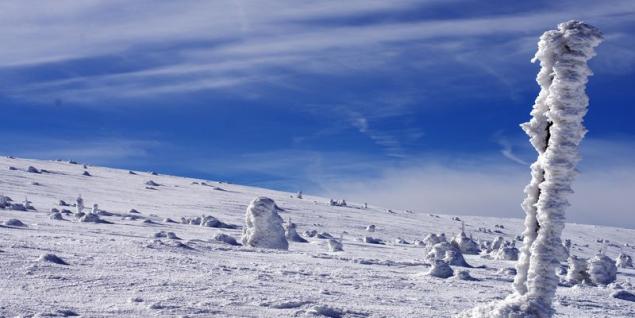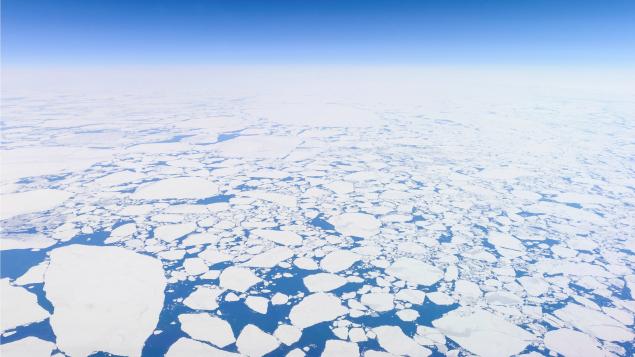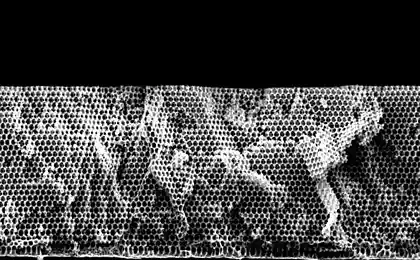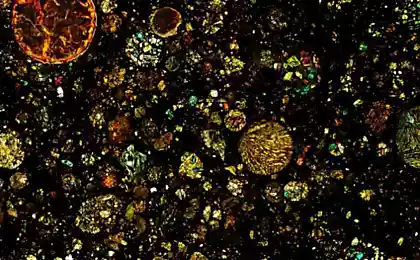652
Why a glacial period on Earth happens every 100 thousand years?

In the last million years the ice age on Earth occurred approximately every 100,000 years. This cycle actually exists, and different groups of scientists at different times have tried to find the reason for its existence. However, the prevailing point of view on this issue yet.
More than a million years ago, the cycle was different. Ice age followed by warming of approximately every 40 thousand years. But then the frequency of occurrence of the glaciers changed from 40 thousand to 100 thousand Why?
Experts from Cardiff University have offered their own explanation for this change. The results of the research were published in the authoritative edition of Geology. According to experts, the main reason for the change of the frequency of occurrence of ice ages are the oceans, or rather, their ability to absorb carbon dioxide from the atmosphere.
Studying sediments that make up the ocean floor, the team found that the CO2 concentration varies from layer to layer of deposits with the period of 100 thousand years. It is likely, scientists say that excess carbon dioxide extracted from the atmosphere the ocean surface with subsequent sequestration of this gas. In the result, the average annual temperature gradually decreases and there comes the next ice age. And it so happened that the duration of the ice age over a million years ago has increased, and the cycle of "heat-cold" has become more lengthy.
"Probably, the oceans absorb and release carbon dioxide, and when the ice becomes larger, the oceans absorb more carbon dioxide from the atmosphere, making the planet colder. When ice is small, the oceans release carbon dioxide so that the climate is getting warmer," says Professor Carrie penny (Carrie Lear). "By studying the concentration of carbon dioxide in the remains of tiny creatures (this refers to sedimentary rocks — approx.ed.) we learned that in periods when the area of glaciers has increased, the oceans absorb more carbon dioxide, so we can assume that in the atmosphere it becomes less."
Seaweed, according to experts, played a major role in the absorption of CO2, because carbon dioxide is an essential component of photosynthesis.
Carbon dioxide gets from the ocean to the atmosphere due to upwelling. Upwelling (eng. upwelling) or lifting is a process in which deep ocean waters rise to the surface. The most frequently observed at the Western borders of the continents, where moves cooler, nutrient rich water from the deep ocean to the surface, replacing the warmer, nutrient poor surface water. Also can occur in almost any area of the world ocean.
A layer of ice on the water surface which prevents diffusion of carbon dioxide into the atmosphere, so if you freeze a significant part of the ocean, it extends the duration of the glacial period. "If we believe that the oceans emit and absorb carbon dioxide, we need to understand that a large amount of ice prevent this process. It's like a cover on the surface of the ocean," says Professor penny.
While the total area of glaciers on the ice surface not only decreases the concentration of "warming" CO2, but also increases the albedo of those regions which are covered with ice. In the result, the planet receives less energy, and therefore cools faster.

Now on Earth interglacial, the warm period. The last glacial period ended about 11,000 years ago. Since then, the annual average temperature and the sea level is constantly rising, and the amount of ice on the water surface of the oceans is reduced. As a result, scientists believe that the atmosphere has plenty of CO2. Plus, carbon dioxide and produces man, and in huge quantities.
All this led to the fact that in September the concentration of carbon dioxide in the atmosphere climbs to 400 parts per million. This figure has increased from 280 to 400 ppm in just 200 years the development of the industry. Most likely, CO2 in the atmosphere in the foreseeable future will be less. All this should result in an increase in the average temperature on Earth primereniya at +5°C in the next thousand years.
Specialists of the Department of climate research in Potsdam Observatory recently built a model of the earth's climate the global carbon cycle. As shown by the model, even with minimal emission of carbon dioxide in the atmosphere ice sheet in the Northern hemisphere will not be able to grow. This means that the onset of the next ice age can move forward at least 50-100 thousand years. So ahead of us, the next change cycle "glaciers-warming", this time is responsible for this.
DOI: 10.1130/G38636.1
Source: geektimes.ru/post/281964/
Dinosaurs could be smarter than assumed. Fossilized brain iguanodont examined under a microscope
Having ears, let him hear – selection criteria headphones























